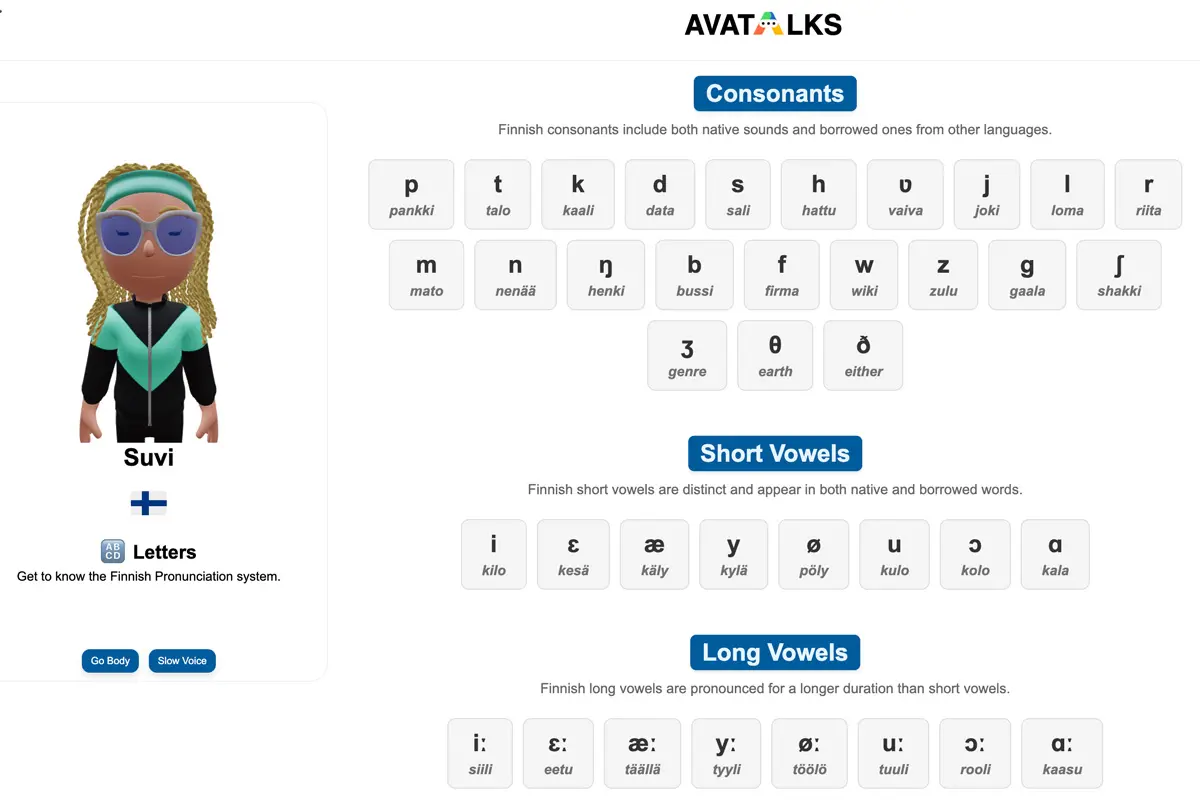
Finnish Language Pronunciation: Everything You Need to Know
Want to master Finnish language pronunciation? You’ve come to the right place. Finnish pronunciation is surprisingly straightforward compared to English — what you see is what you say. Each letter corresponds to only one sound. Still, understanding how to pronounce Finnish correctly involves mastering long vowels, rolled R’s, and some unique consonant sounds.
Table of Contents
Open Table of Contents
- 1. Basics of Finnish Pronunciation
- 2. Finnish Vowel Sounds
- 3. Consonants You Should Know
- 4. Long vs. Short Sounds Matter
- 5. Diphthongs and Sound Combinations
- 6. Stress and Intonation
- 7. Common Pronunciation Mistakes
- 8. Pronunciation Tips for English Speakers
- 9. Finnish Pronunciation Practice Resources
- 10. Final Thoughts
1. Basics of Finnish Pronunciation
The Finnish alphabet has 29 letters. Most are the same as in English, with some extras: ä, ö, and å. Each letter has only one pronunciation, and words are read exactly as they’re written — no silent letters or tricky exceptions.
If you can pronounce each letter correctly, you can read any Finnish word.
2. Finnish Vowel Sounds
There are 8 vowels in Finnish:
a, e, i, o, u, y, ä, ö
| Letter | Pronunciation | Similar to |
|---|---|---|
| a | /ɑ/ | ’a’ in “father” |
| e | /e/ | ‘e’ in “pen” |
| i | /i/ | ‘ee’ in “see” |
| o | /o/ | ‘o’ in “more” |
| u | /u/ | ‘oo’ in “boot” |
| y | /y/ | like French ‘u’ (purse lips as if saying ‘oo’, but say ‘ee’) |
| ä | /æ/ | ‘a’ in “cat” |
| ö | /ø/ | similar to ‘i’ in “bird” (British) |
3. Consonants You Should Know
Most Finnish consonants are familiar to English speakers, but there are a few key differences:
- J is pronounced like Y in “yes.”
- R is rolled.
- D is soft.
- G and B are used mainly in foreign words.
Letters like C, Q, W, X, and Z are rare and only appear in borrowed words.
4. Long vs. Short Sounds Matter
In Finnish, length matters — a lot.
| Word | Meaning |
|---|---|
| tuli | fire |
| tuuli | wind |
See the difference? Double letters mean the sound is held longer.
- tuli = short vowel
- tuuli = long vowel
It applies to consonants too:
- tapa = a habit
- tappa = to kill
Always pronounce double letters clearly and longer!
5. Diphthongs and Sound Combinations
Finnish uses many diphthongs (two vowel sounds together). Examples:
| Diphthong | Pronunciation | Example | Meaning |
|---|---|---|---|
| ai | like “eye” | aika | time |
| ei | like “ay” | ei | no |
| oi | like “boy” | poika | boy |
| au | like “ow” | auto | car |
| ie | like “yeah” | tiede | science |
Just glide smoothly between vowels — no breaks!
6. Stress and Intonation
In Finnish, stress is always on the first syllable of a word. This makes rhythm predictable.
Examples:
- talo (house) = TA-lo
- opiskelija (student) = O-pis-ke-li-ja
Intonation is flat compared to English. No rising pitch at the end of questions.
7. Common Pronunciation Mistakes
Here are typical problems for beginners:
- Ignoring vowel length.
- Not rolling the “R”.
- Using English diphthongs.
- Misplacing word stress.
Avoiding these will make your Finnish much clearer to native speakers.
8. Pronunciation Tips for English Speakers
- Practice minimal pairs: tuli vs tuuli, tapaan vs tappaan
- Listen and repeat with audio tools like Forvo or Avatalks
- Record yourself to compare
- Practice rolling R’s — start with tongue drills or Spanish ‘perro’
- Master vowel rounding: especially y, ä, and ö
9. Finnish Pronunciation Practice Resources
Here are a interacive tool to help you train your ears and mouth:
- Avatalks: Interactive pronunciation tool

10. Final Thoughts
Finnish language pronunciation may seem intimidating at first, but it’s much more logical than English. Once you master vowels, stress, and sound length, everything starts falling into place. Focus on consistent practice, record your voice, and don’t be afraid to sound silly — every fluent speaker starts with mispronunciations.
By learning how to pronounce Finnish correctly, you’ll not only be understood more clearly but also feel more confident using the language in real-life situations.
Ready to sound more Finnish? Start practicing today!